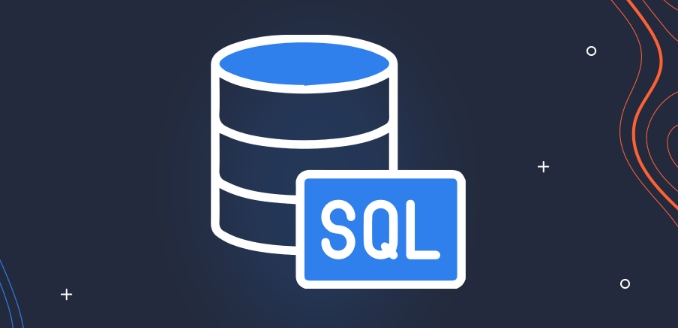INNER JOIN returns only matching rows between tables, ideal for finding records that exist in both datasets, such as customers who placed orders. 2. LEFT JOIN includes all rows from the left table and matched rows from the right, with NULLs for unmatched entries, useful for identifying customers without orders. 3. RIGHT JOIN mirrors LEFT JOIN by including all rows from the right table, though less commonly used due to preference for LEFT JOIN with reversed table order. 4. FULL OUTER JOIN combines all rows from both tables, filling unmatched fields with NULLs, best for data reconciliation and auditing, though not supported in all databases like MySQL. 5. Self-join involves joining a table to itself using aliases, effective for comparing rows within the same table, such as employees sharing a manager. 6. CROSS JOIN produces a Cartesian product, pairing every row from one table with every row from another, suitable for generating combinations like product sizes. 7. Best practices include always specifying join conditions, using clear aliases, indexing join columns, avoiding duplicates through DISTINCT or aggregation, and prioritizing LEFT JOIN for consistency, ensuring efficient and readable queries that accurately reflect data relationships.

SQL joins are essential for combining data from two or more tables based on related columns. Whether you're analyzing sales data, managing user information, or building reports, understanding how to use joins effectively is a core skill for any data professional. This guide breaks down the different types of SQL joins, when to use them, and practical examples to help you master data combination.

INNER JOIN: Get Matching Rows Only
The INNER JOIN returns only the rows where there’s a match in both tables. It’s the most commonly used join and ideal when you only want records that exist in both datasets.
For example, if you have a customers table and an orders table, and you want to find all customers who’ve placed at least one order:

SELECT customers.name, orders.order_date, orders.amount FROM customers INNER JOIN orders ON customers.id = orders.customer_id;
This query pulls data only for customers who appear in both tables. If a customer hasn’t placed an order, they won’t show up.
Key points:

- Use when you need mutual presence in both tables.
- Excludes unmatched rows completely.
- Most efficient for filtering to shared data.
LEFT JOIN (or LEFT OUTER JOIN): Keep All from Left Table
A LEFT JOIN returns all rows from the left (first) table and matching rows from the right (second) table. If no match exists, the result contains NULL values for the right table’s columns.
This is useful when you want to see all customers, even those who haven’t ordered:
SELECT customers.name, orders.order_date FROM customers LEFT JOIN orders ON customers.id = orders.customer_id;
Now, even customers without orders appear — their order_date will be NULL.
Common use cases:
- Counting how many users haven’t taken an action (e.g., no purchase, no login).
- Building dashboards that show completeness (e.g., profiles missing data).
- Retention analysis where some users have zero activity.
You can filter for unmatched rows using a WHERE clause:
WHERE orders.customer_id IS NULL;
This gives you customers with no orders — great for targeting outreach campaigns.
RIGHT JOIN (or RIGHT OUTER JOIN): Keep All from Right Table
RIGHT JOIN is the mirror of LEFT JOIN. It returns all rows from the right table and matched rows from the left. While functionally similar, it’s less commonly used because you can usually rewrite the query with a LEFT JOIN by switching table order.
Example:
SELECT customers.name, orders.order_date FROM customers RIGHT JOIN orders ON customers.id = orders.customer_id;
This shows every order, even if the customer record is missing (e.g., due to deletion or error). In practice, most developers prefer LEFT JOIN for readability and consistency.
FULL OUTER JOIN: Combine All Rows
A FULL OUTER JOIN returns all rows from both tables. Where there’s no match, NULL values fill in the gaps.
Useful when you need a complete picture of both datasets, regardless of matches:
SELECT customers.name, orders.order_date FROM customers FULL OUTER JOIN orders ON customers.id = orders.customer_id;
This might show:
- Customers with no orders (NULL order_date)
- Orders with no customer (NULL name)
Typical scenarios:
- Data reconciliation (e.g., comparing two systems).
- Auditing for inconsistencies or missing records.
- Merging logs or events from different sources.
Note: Not all databases support FULL OUTER JOIN (e.g., MySQL doesn’t), so check your system.
Self-Join: Join a Table to Itself
Sometimes you need to compare rows within the same table. A self-join treats the table as two separate entities using aliases.
For example, finding employees who share the same manager:
SELECT a.name AS employee1, b.name AS employee2, a.manager_id FROM employees a JOIN employees b ON a.manager_id = b.manager_id WHERE a.id < b.id; -- Avoid duplicate pairs
No special keyword — just a regular JOIN with the same table aliased differently.
Cross Join: Every Combination
CROSS JOIN produces the Cartesian product — every row from the first table paired with every row from the second. Use with caution; results grow quickly.
SELECT products.name, sizes.size FROM products CROSS JOIN sizes;
This generates all possible product-size combinations. Useful for generating test data or setting up configurations.
Tips for Writing Better Joins
-
Always specify the join condition — forgetting
ONcan lead to accidental cross joins. -
Use meaningful table aliases like
cfor customers,ofor orders to keep queries readable. - Prefer LEFT JOIN over RIGHT JOIN for consistency.
- Index your join columns — joins on unindexed columns slow down queries significantly.
-
Watch for duplicates — joining one-to-many relationships can inflate row counts. Use
DISTINCTor aggregation when needed.
Final Thoughts
Joins are powerful tools for unlocking relationships in your data. Start with INNER and LEFT JOIN — they cover most real-world needs. As you grow more comfortable, experiment with self-joins and full outer joins for advanced analysis.
Understanding when and how to combine tables is more than syntax — it’s about thinking clearly about your data relationships. Practice with real datasets, inspect your results, and gradually build confidence.
Basically, master these, and you’ll handle most data combination tasks with ease.
The above is the detailed content of Mastering SQL Joins: A Comprehensive Guide to Combining Data. For more information, please follow other related articles on the PHP Chinese website!

Hot AI Tools

Undress AI Tool
Undress images for free

Undresser.AI Undress
AI-powered app for creating realistic nude photos

AI Clothes Remover
Online AI tool for removing clothes from photos.

Clothoff.io
AI clothes remover

Video Face Swap
Swap faces in any video effortlessly with our completely free AI face swap tool!

Hot Article

Hot Tools

Notepad++7.3.1
Easy-to-use and free code editor

SublimeText3 Chinese version
Chinese version, very easy to use

Zend Studio 13.0.1
Powerful PHP integrated development environment

Dreamweaver CS6
Visual web development tools

SublimeText3 Mac version
God-level code editing software (SublimeText3)

Hot Topics
 iOS 18 adds a new 'Recovered' album function to retrieve lost or damaged photos
Jul 18, 2024 am 05:48 AM
iOS 18 adds a new 'Recovered' album function to retrieve lost or damaged photos
Jul 18, 2024 am 05:48 AM
Apple's latest releases of iOS18, iPadOS18 and macOS Sequoia systems have added an important feature to the Photos application, designed to help users easily recover photos and videos lost or damaged due to various reasons. The new feature introduces an album called "Recovered" in the Tools section of the Photos app that will automatically appear when a user has pictures or videos on their device that are not part of their photo library. The emergence of the "Recovered" album provides a solution for photos and videos lost due to database corruption, the camera application not saving to the photo library correctly, or a third-party application managing the photo library. Users only need a few simple steps
 How to save JSON data to database in Golang?
Jun 06, 2024 am 11:24 AM
How to save JSON data to database in Golang?
Jun 06, 2024 am 11:24 AM
JSON data can be saved into a MySQL database by using the gjson library or the json.Unmarshal function. The gjson library provides convenience methods to parse JSON fields, and the json.Unmarshal function requires a target type pointer to unmarshal JSON data. Both methods require preparing SQL statements and performing insert operations to persist the data into the database.
 MySQL: Simple Concepts for Easy Learning
Apr 10, 2025 am 09:29 AM
MySQL: Simple Concepts for Easy Learning
Apr 10, 2025 am 09:29 AM
MySQL is an open source relational database management system. 1) Create database and tables: Use the CREATEDATABASE and CREATETABLE commands. 2) Basic operations: INSERT, UPDATE, DELETE and SELECT. 3) Advanced operations: JOIN, subquery and transaction processing. 4) Debugging skills: Check syntax, data type and permissions. 5) Optimization suggestions: Use indexes, avoid SELECT* and use transactions.
 Detailed tutorial on establishing a database connection using MySQLi in PHP
Jun 04, 2024 pm 01:42 PM
Detailed tutorial on establishing a database connection using MySQLi in PHP
Jun 04, 2024 pm 01:42 PM
How to use MySQLi to establish a database connection in PHP: Include MySQLi extension (require_once) Create connection function (functionconnect_to_db) Call connection function ($conn=connect_to_db()) Execute query ($result=$conn->query()) Close connection ( $conn->close())
 How to handle database connection errors in PHP
Jun 05, 2024 pm 02:16 PM
How to handle database connection errors in PHP
Jun 05, 2024 pm 02:16 PM
To handle database connection errors in PHP, you can use the following steps: Use mysqli_connect_errno() to obtain the error code. Use mysqli_connect_error() to get the error message. By capturing and logging these error messages, database connection issues can be easily identified and resolved, ensuring the smooth running of your application.
 Oracle's Role in the Business World
Apr 23, 2025 am 12:01 AM
Oracle's Role in the Business World
Apr 23, 2025 am 12:01 AM
Oracle is not only a database company, but also a leader in cloud computing and ERP systems. 1. Oracle provides comprehensive solutions from database to cloud services and ERP systems. 2. OracleCloud challenges AWS and Azure, providing IaaS, PaaS and SaaS services. 3. Oracle's ERP systems such as E-BusinessSuite and FusionApplications help enterprises optimize operations.
 MySQL: An Introduction to the World's Most Popular Database
Apr 12, 2025 am 12:18 AM
MySQL: An Introduction to the World's Most Popular Database
Apr 12, 2025 am 12:18 AM
MySQL is an open source relational database management system, mainly used to store and retrieve data quickly and reliably. Its working principle includes client requests, query resolution, execution of queries and return results. Examples of usage include creating tables, inserting and querying data, and advanced features such as JOIN operations. Common errors involve SQL syntax, data types, and permissions, and optimization suggestions include the use of indexes, optimized queries, and partitioning of tables.
 MySQL vs. Other Databases: Comparing the Options
Apr 15, 2025 am 12:08 AM
MySQL vs. Other Databases: Comparing the Options
Apr 15, 2025 am 12:08 AM
MySQL is suitable for web applications and content management systems and is popular for its open source, high performance and ease of use. 1) Compared with PostgreSQL, MySQL performs better in simple queries and high concurrent read operations. 2) Compared with Oracle, MySQL is more popular among small and medium-sized enterprises because of its open source and low cost. 3) Compared with Microsoft SQL Server, MySQL is more suitable for cross-platform applications. 4) Unlike MongoDB, MySQL is more suitable for structured data and transaction processing.






